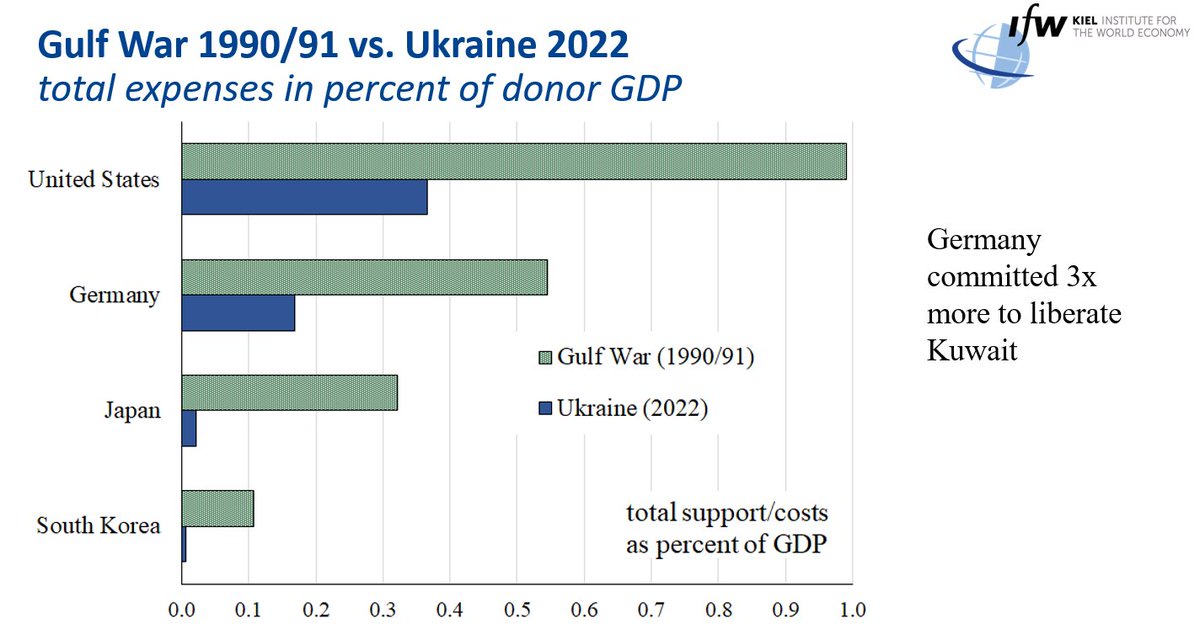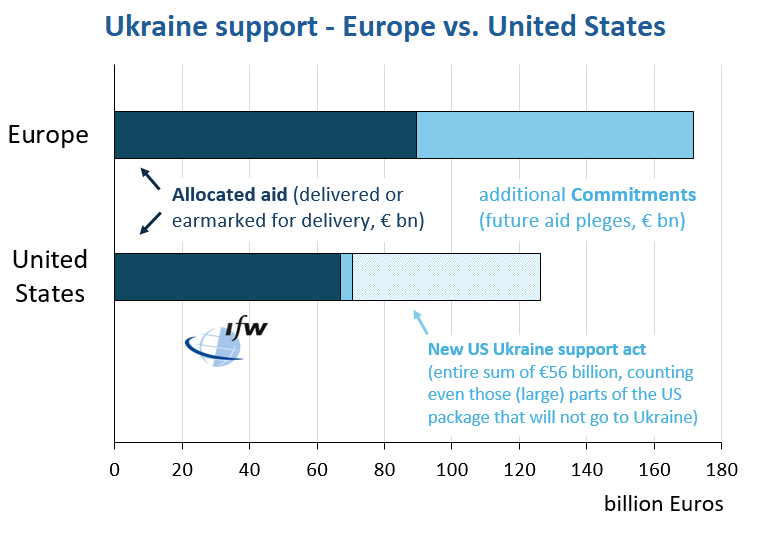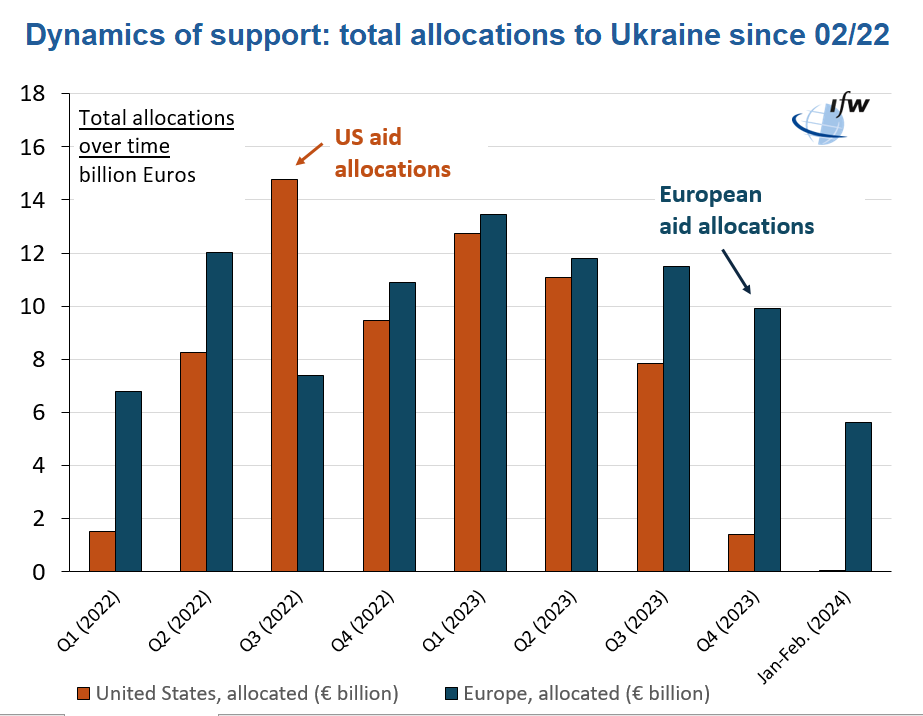📢Is Western aid to Ukraine large or small? Our new Ukraine Tracker release takes a "big picture view" over 100 years. Main insight: It's comparatively small. US expenses in previous wars were far higher &the EU mobilized 10x more for other crises (Euro, Covid19, energy crisis)🧵
Let us first look at UKR support over the course of 2022. We see a repeating pattern: the US leads, Europe follows. As of Jan 15, 2023, the US (€73bn) is again clearly ahead of the EU (€55bn, members + EU Commission) 

Another clear pattern in 2022: The US gives large military aid to UKR, the EU focuses on financial aid (much of this aid remains undisbursed, however). 

In percent of donor country GDP, bilateral support to Ukraine is at around 1% for the Baltics, 0,37% for the US, 0.17% for GER, 0.07% for FRA, 0.06% for ITA and 0.03% for Spain. If we reassign EU commitments, each EU countries gets approx. 0.2% of GDP more. 

How does the support to Ukraine compare to previous wars? Data is scarce, but we know a lot about WW2 (Lend-Lease 1941-45)👇The nr of heavy weapons sent by the US alone is staggering: >30,000 tanks, >25,000 airplanes. In 2022, UKR was promised ca. 500 tanks & 500 howitzers total 

We next compare costs relative to GDP and account for war duration. Data exists for WW2 (see paper) as well as for main US-wars👇Main result: The average yearly military expenditures were far greater in Korea, Vietnam, or Iraq. Total aid to Ukraine is considerably lower in % GDP 

The biggest surprise was the data on the Gulf War 1990/91. I was not aware how much Germany or Japan did to help liberate Kuwait. Germany alone gave 16.9 billion D-Marks in military and financial aid to its allies (0.55% of GDP). That is 3x its bilateral aid to Ukraine in 2022. 

Beyond wars, how does aid to UKR compare to other big crises? EU countries mobilized much more support during the Euro crisis 2010-12 and during the Covid-19 crisis. The EU's pandemic recovery fund NGEU alone is 10x larger than total EU aid to UKR thus far 

In 2022, European governments mobilized large-scale support, but the large bulk of this emergency fundung was for their own population, not for Ukraine. @Bruegel_org data show the massive scale of Europe's energy subsidy packages. They are 10- 20x larger than the aid for UKR 

Also Germany showed a stark priority for domestic rescue packages in 2022. Total bilateral aid to UKR is comparable to the transport subsidies of mid-22 (9-Euro ticket + “Tankrabatt”). The energy shield ("Doppelwumms") and the Uniper rescue are many times larger 

As always, kudos to the @kielinstitute team: Katelyn Bushnell, André Frank, Lukas Franz, Ivan Kharitonov and Stefan Schramm. Feedback very welcome ukrainetracker@ifw-kiel.de. More details and results can be found in our expanded paper and dataset here: ifw-kiel.de/ukrainetracker
@carlbildt, @OlafGersemann, @GuntramWolff, @MSchularick, @BachmannRudi, @CarloMasala1, @SamRamani2, @thorstenbenner, @manta_greg, @JulianRoepcke, @MacaesBruno, @GFelbermayr
• • •
Missing some Tweet in this thread? You can try to
force a refresh



















